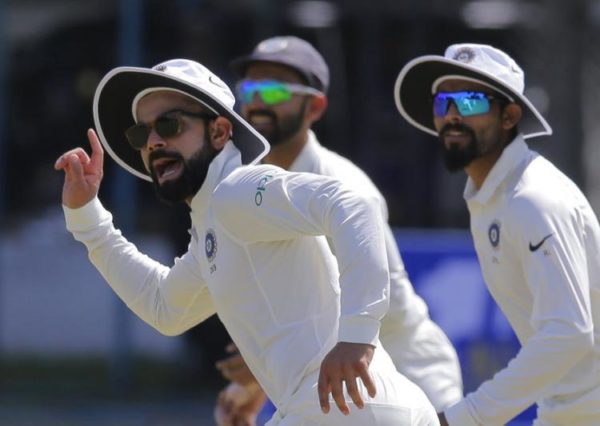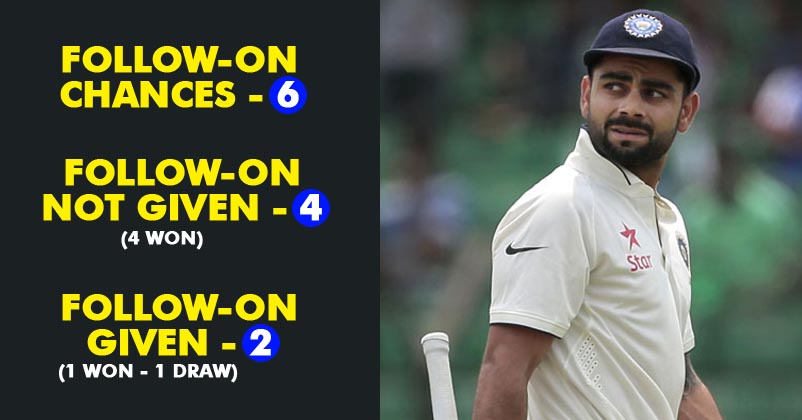India vs Sri Lanka test series has started after a long wait and the 1st match is being played between the two teams in the Galle, Sri Lanka.
In the 1st match itself, Team India has been able to put great pressure on the host team with their supreme performance.
Shikhar Dhawan and Cheteshwar Pujara’s strong 190 & 153 runs in the 1st innings helped Team India put a big total of 600 against Sri Lanka. On the other hand, Team Sri Lanka went all out on 291.

Everyone thought that Team India will impose a follow-on to the opponents team but it didn’t happen and like past few instances, Virat Kohli again decided to take batting. Here’s 4 instances in Kohli’s captaincy when he had option to enforce follow-on but he didn’t:-

Other 2 instances when he chose to enforce follow-on, match ended in draw against Bangladesh because of rain & 2nd time India won against WI by an inning.
But today when he again avoided follow-on against Sri Lanka, then it made everyone think why Team India is not giving follow-on to their opponents even after getting many chances.
This Quora user has an answer and we think he’s right.
I think due to aggressive mindset of the Indian Captain Virat Kohli that he does not likes to enforce a ‘Follow on’.
Firstly, no team wants to bat in the fourth innings on a fifth day wicket. The pitch supports the bowlers heavily on the last day and it really becomes difficult to chase even 150. Virat does not want to take a risk and give opposition any chance of coming back in the game. Though the probability of the opposition to set a big target is very less if a follow on is enforced but even 150–200 is enough and it’s not a risk worth taking.
Secondly, the bowlers get a bit of break when the team bats again especially considering the fact the players are playing too much cricket nowadays.
Thirdly, what is the need of hurrying up in a test match. It is played over 5 days and 15 sessions. A win is a win, even if you win it on the fourth day or in the fifth day last season.
Lastly, the probability of losing from setting a target of 450+ is very less compared to the probability of losing from a follow on.
If the weather forecast is bad then enforcing the follow on is the best option.
You can read the full thread here.
For those who don’t follow Test Cricket and doesn’t understand Follow On.
In Test Cricket, there is no limit of overs for the teams so once a side starts batting, they play until all the players are out.

Now, the second side has to chase that target and set a lead against the first team. But in case they fall short, there’s a maximum difference of 200 that is allowed. If the second team falls short of that too, it gives an advantage to the first team and it’s called “Follow On”.
The team with the advantage of Follow On can make the opposition play again and this time the new total will be added to the old total.
Suppose Team A scored 550 runs in the first innings and the second team got all out on mere 260 runs. This is a difference of 290 runs which means Team A can impose a “Follow On” on Team B.
Now Team B will play again and suppose they score 400 runs in the second innings this will make a total of 660 runs for Team B. Team A needs a score of 111 to win now. And in case Team B falls short again and scores less than 290, Team A will win the match without even playing the second innings.




